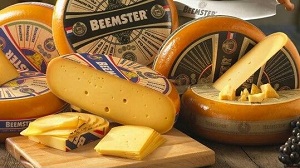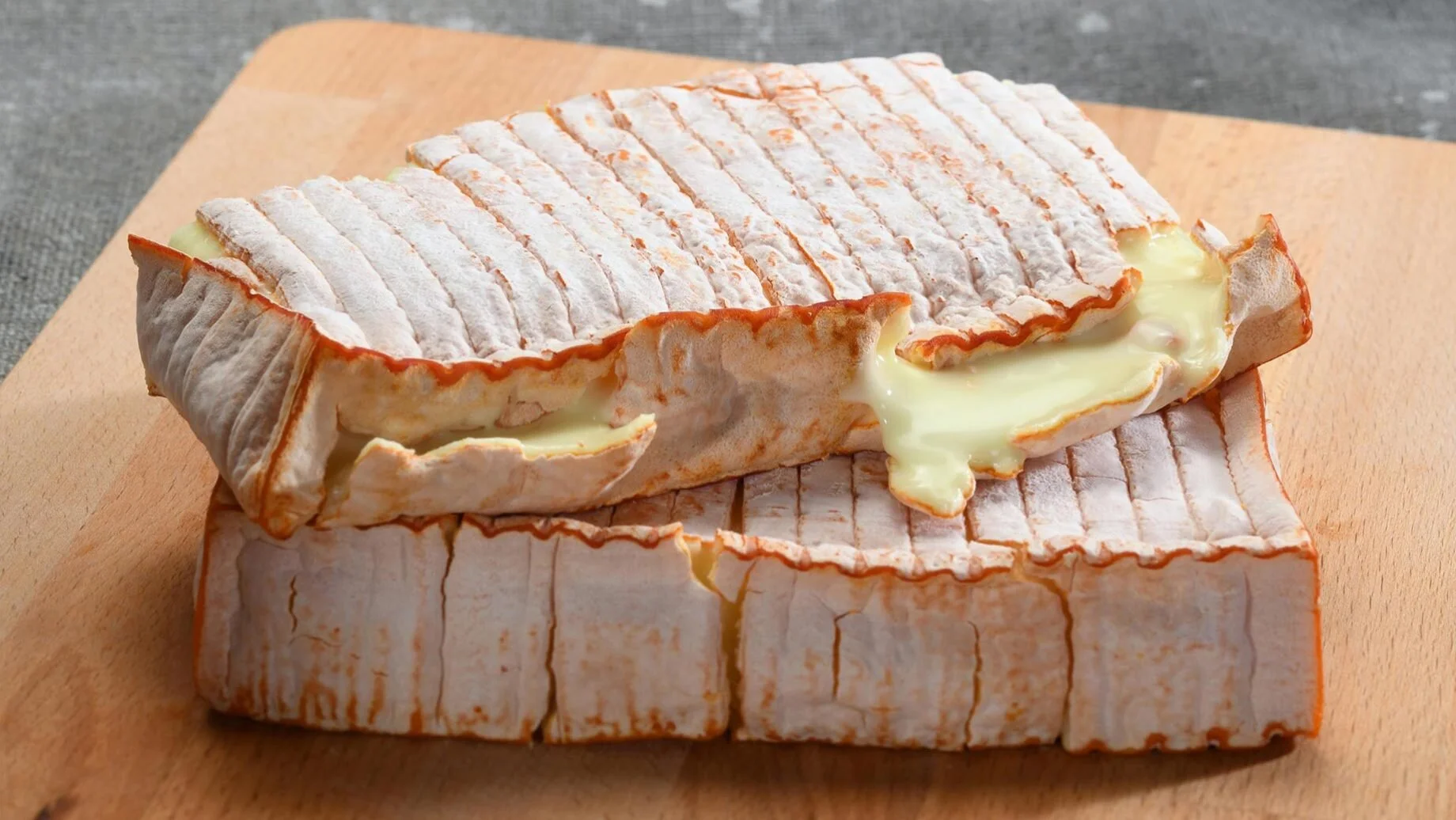Photo: goudacheeseshop.com
World Cheese Encyclopaedia - Each Sunday learn all about a new cheese.
This week Beemster from The Netherlands.
Photo: the nibble.com
Country: The Netherlands 🇳🇱
Region: Beemster
Made from: Cow’s milk
Pasteurised: Yes
Texture: Crystalline, firm and smooth
Taste: Sharp, salty
Certification: No
Aging: From 1 to 24 months
Beemster cheese is a hard, Dutch cow's milk cheese. Production of Beemster is similar to other hard cheeses such as Gouda. The specific taste of Beemster stems from the ingredients (milk from grass grown on sea-clay in a polder 4 meters below sea-level) and from the fact that part of the production process (the stirring of the curd) is done by hand and that the cheeses are ripened in changing conditions.
Beemster cheese is made from milk that comes from the Beemster polder. This polder was drained in the 17th century and since the year 1901 the farmers have joined together to make cheese. The fertile soil is ideal for agriculture, but also for cows. The cows spend at least six months outside every year and eat the nutritious grass. As a result, their milk is packed with good minerals and proteins.
The Beemster cheeses are produced according to traditional methods, using rennet and a starter culture. The composition of this starter is a carefully kept secret, because it gives the cheese its full, creamy flavour. The curd also receives a lot of attention. The Beemster cheese makers are responsible for the curd themselves and stir it personally. In this way, they guarantee that every cheese is worthy of the Beemster label. The right combination of ingredients ensures the recognisable ‘pliable’ mouthfeel. The cheeses are eventually matured on wooden planks, which remove the moisture. The longer the cheese remains on the shelf, the saltier the final product will be. A young Beemster cheese is ready for sale after just one month, while a mature cheese stays on the shelf for up to 24 months.
Photo: Beemster Cheese
Similar to Gouda, Beemster cheese comes in several different varieties including flavors of mustard and garlic, and also in different strengths and ages such as the strong Beemster X-O that is aged for 24 months and Beemster Goat Cheese which is only aged for four months. The Beemster Classic is the hallmark cheese that has been aged for 18 months in historic cheese warehouses, giving a rich and creamy texture with a light caramel color.
Beemster is known for its sustainable production process. The cows get enough time in the pasture, but are also well cared for in the barn. Beemster also ensures that the production of cheese is not done at the expense of the polder.
History
Beemster (BAME-ster) cheese has been around for over a century and is regarded as a signature Dutch cheese in the Netherlands. However, the Beemster Polder, where the cheese originates, has been around since the 17th century and was was inscribed on the UNESCO (United Nations Educational, Scientific and Cultural Organization) World Heritage Site list in 1999.
Photo: Beemster Cheese
In 1612, Dutch engineers drained uninhabitable marshes and bogs by using a system of dikes and windmills resulting in the first large scale and the most famous polder (land reclaimed from the sea through draining) in the Netherlands. The land was organized and divided by a grid of squares that was superimposed on the landscape. This became the ideal for all polders and soon after the norm for city planning and landscape architecture.
After the completion of the Beemster-polder in 1612 farming was made possible. The new land--four meters below sea-level--was fertile and suitable for agriculture and dairy farming.
The Beemster Polder has a nutrient and mineral rich clay soil with a distinctive slate blue color that yields longer, fertile, and thicker grasses, giving the milk an especially sweet and creamy quality. Over time, the cheese developed into the Beemster cheese we know today.
Photo: cheesemonthclub.com
Until 1901 most of the dairy farmers delivered their milk and home-made cheese to local merchants. The dependency on these merchants did not always please them. In 1901, the dairy farmers came together and created a formal co-op that helped streamline production and ensured consistency in its taste. Today’s cooperative has about 475 farmers produces about 30,000 tons of Beemster each year. In 2001 the Queen of The Netherlands awarded Beemster the title 'By Appointment to the Court of the Netherlands'.
How to enjoy it
This cheese looks and feels similar to parmesan but it is more closely related to gouda in taste and texture. Beemster Classic has a smooth, creamy texture followed by a sharp, salty flavor due to its extensive aging. The saltiness comes from little grains of salt within the cheese that are added for a more rich and complex flavor. Since Beemster is a “gouda style” cheese, you can slice it for sandwiches, cube it for snacks, or grate it for cooking. and pair it with red wines, port wines and dark, stout breads. The cheese should be served at room temperature. Pair Beemster cheeses with your favorite sturdy dry white wines (Chardonnay stands up well) or sturdy reds made from Bordeaux grapes, or Valpolicella. The aged cheeses go well with rich, fruitier reds, rieslings or dessert wines.
Source: Wikipedia, cheesemonthclub.com, cheese.com, beemstercheese.us, goudacheeseshop.com, thenibble.com
Looking for a different cheese? Search the whole cheese encyclopaedia here.






























